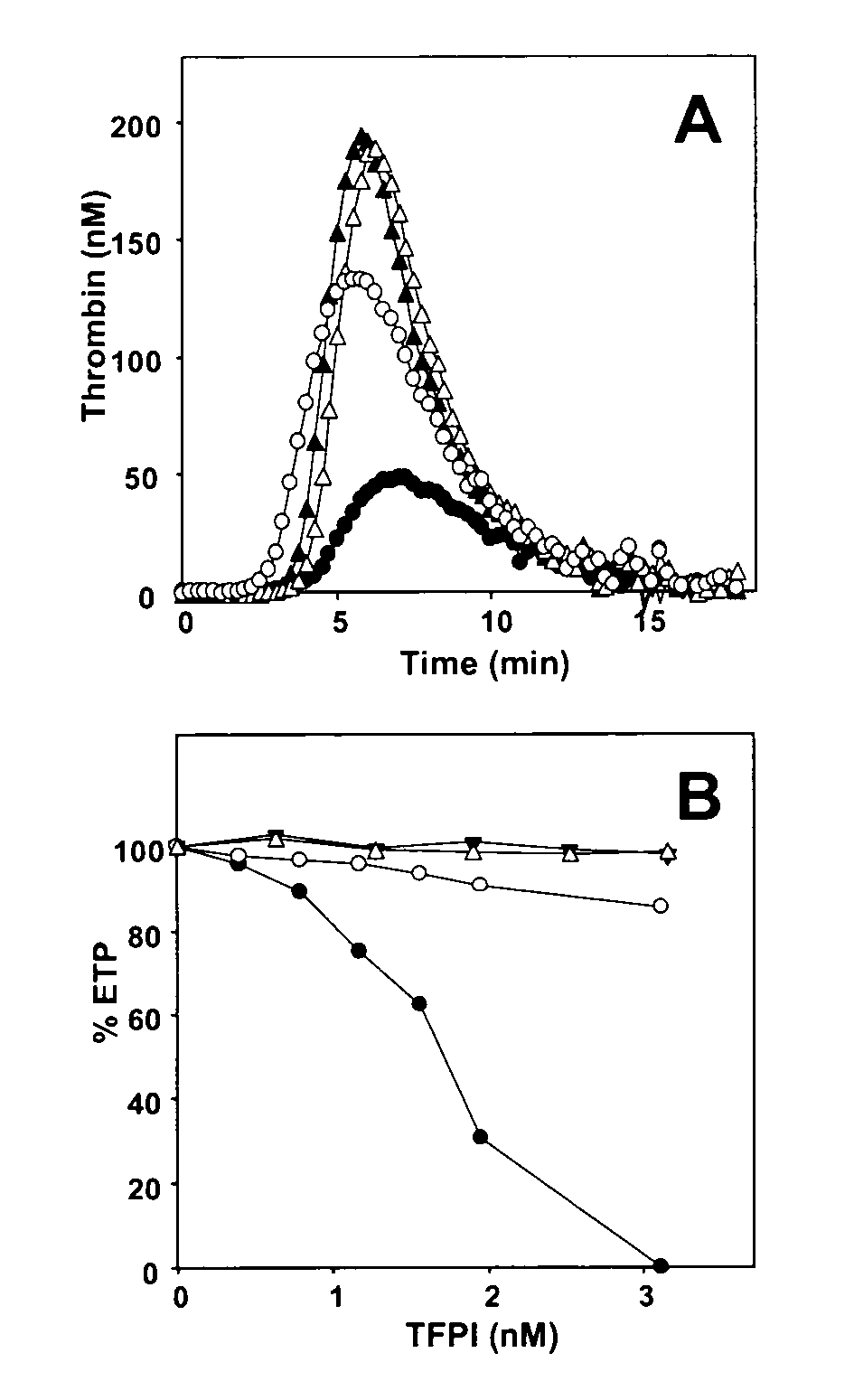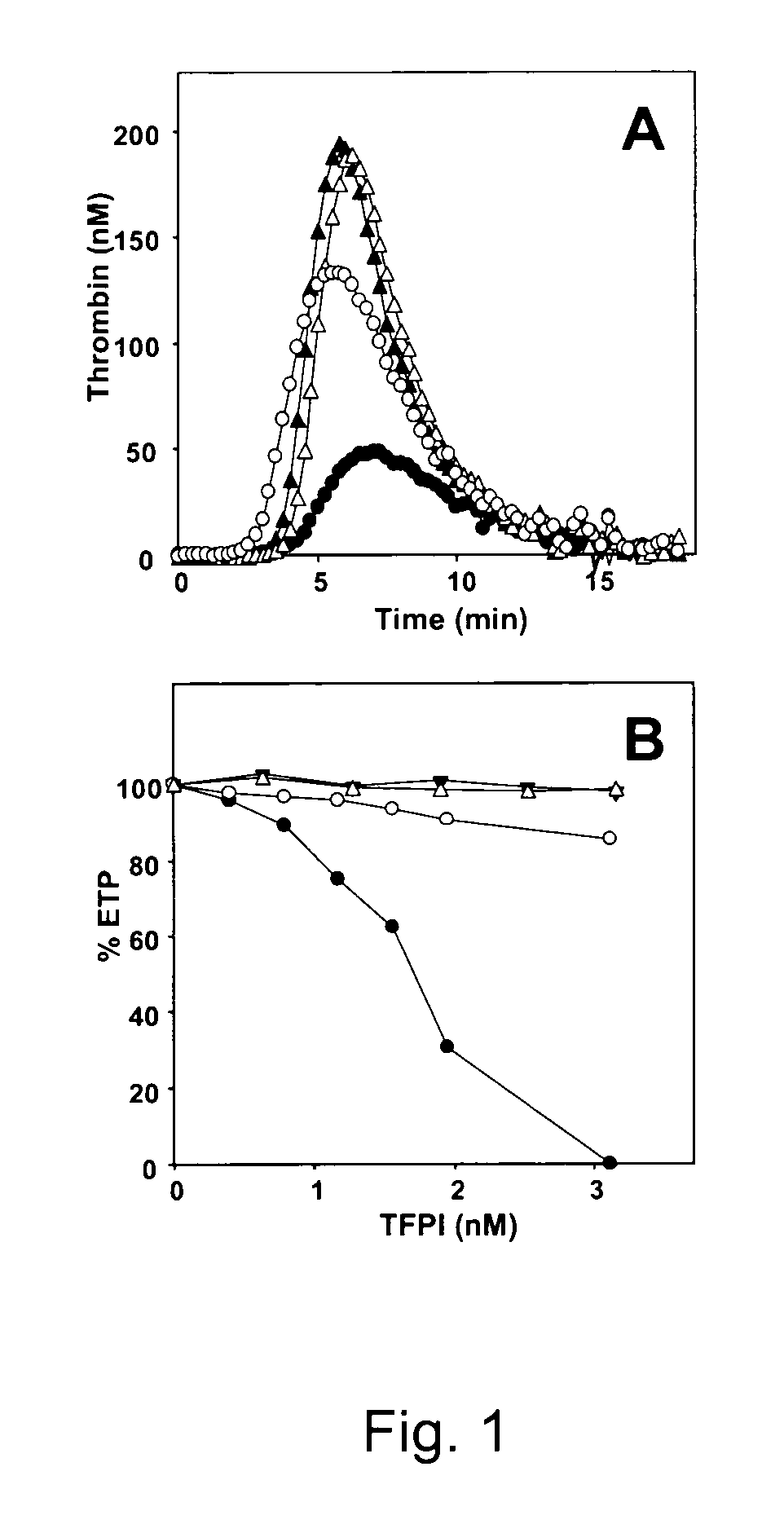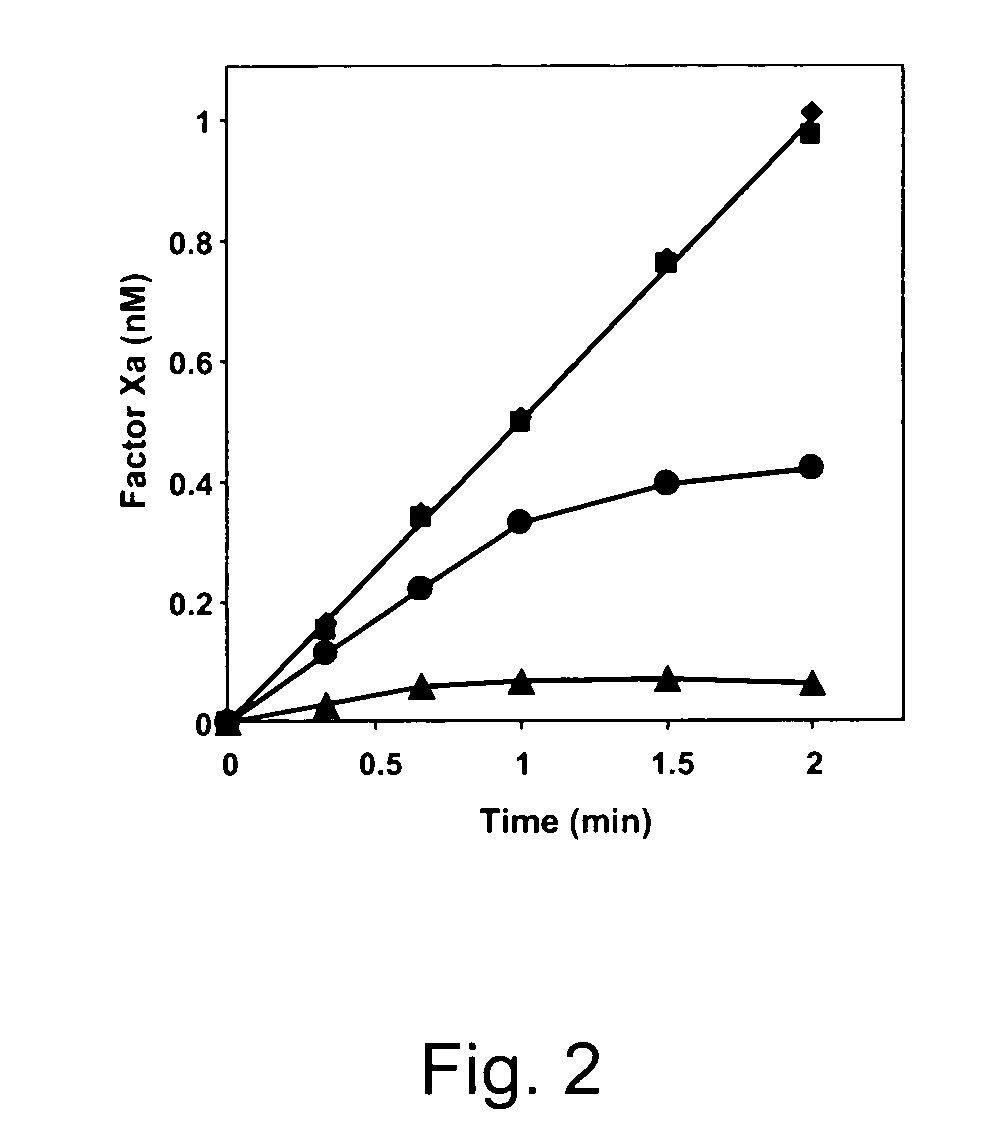Regulation of Tissue Factor Activity by Protein S and Tissue Factor Pathway Inhibitor
a technology of protein s and pathway inhibitors, applied in the direction of instruments, peptide/protein ingredients, extracellular fluid disorders, etc., can solve the problems of increasing the risk of venous thrombosis, hypocoagulation state, and no study that reveals the mechanism underlying the effect of protein s on the coagulation system
- Summary
- Abstract
- Description
- Claims
- Application Information
AI Technical Summary
Benefits of technology
Problems solved by technology
Method used
Image
Examples
example 1
Materials
[0079]Hepes-buffer was obtained from Sigma (St Louis, Mass.); Bovine serum albumin (BSA) from ICN (Aurora, Ohio); Fluorogenic substrate I-1140 was from Bachem (Switzerland); Recombinant tissue factor (thromboplastin) was from Dade Innovin (Dade Behring, Marburg, Germany); 1,2-Dioleoyl-sn-glycero-3-phosphocholine (DOPC), 1,2-Dioleoyl-sn-glycero-3-phosphoserine (DOPS) and 1,2-Dioleoyl-sn-glycero-3-phospho-ethanolamine (DOPE) were obtained from Avanti Polar Lipids (Alabaster, Ala.). Phospholipids vesicles (20% DOPS, 20% DOPE, 60% DOPC) were prepared as described previously (19).
[0080]Polyclonal anti protein S and anti protein C antibodies were obtained from DAKO (Glostrup, Sweden). Human factor Xa was obtained from Enzyme Research Laboratories (South Bend, Ind.). TFPI was kindly provided by Dr Lindhout from our institute (40). Full length TFPI was produced in Escherichia coli, the truncated variant of TFPI (amino acid residues 1-161) was expressed in Sacharomyces cerevisiae. P...
example 2
Measurement of Thrombin Generation
[0081]Thrombin generation was initiated in normal pooled plasma with 1.4 pM TF, 10 μM phospholipid vesicles (20 / 60 / 20 DOPS / DOPC / DOPE) and 16 mM CaCl2 (final concentrations) and continuously followed with the fluorogenic substrate I-1140 (Z-Gly-Gly-Arg-AMC.HCl) as previously described (19, 46). Interference by APC-activity was excluded in all experiments by addition of inhibitory anti-(activated) protein C antibodies (1.23 μM IgG) sufficient to completely block both activation of endogenous protein C and the effect of 5 nM activated protein C added to plasma. Protein S was inhibited in plasma by addition of saturating amounts of polyclonal antiserum against protein S (2.73 μM IgG) and preincubation of plasma during 15 min at 37° C. prior to the initiation of thrombin generation as described in reference (19). When indicated, C4BP was added to plasma to a final concentration of approx 575 nM (approx 200 nM endogenous C4BP and 375 nM exogenous C4BP) an...
example 3
Inhibition of TF / FVIIa-catalyzed activation of FX by TFPI and protein S
[0082]1 pM TF was incubated with 500 pM recombinant FVIIa (NovoSeven) in the presence of 15 μM phospholipids (20 / 60 / 20 DOPS / DOPC / DOPE) at 37° C. in Hepes-buffered saline (HBS: 25 mM Hepes, 175 mM NaCl, pH 7.7) containing 3 mM CaCl2 and 0.5 mg / ml BSA. FXa generation was started by addition of 160 nM human FX either in the absence or presence of 1 nM TFPI and / or 100 nM protein S (final concentrations). After different time intervals, aliquots taken from the reaction mixture were diluted 10-fold in ice-cold stop-buffer (TBS: 50 mM Tris-HCl, 175 mM NaCl, pH 7.9) containing 20 mM EDTA and 0.5 mg / ml ovalbumin and FXa present in the diluted aliquots was determined with the chromogenic substrate S2765 (Z-D-Arg-Gly-Arg-pNA.2HCl).
PUM
| Property | Measurement | Unit |
|---|---|---|
| concentrations | aaaaa | aaaaa |
| pH | aaaaa | aaaaa |
| pH | aaaaa | aaaaa |
Abstract
Description
Claims
Application Information
 Login to View More
Login to View More - R&D
- Intellectual Property
- Life Sciences
- Materials
- Tech Scout
- Unparalleled Data Quality
- Higher Quality Content
- 60% Fewer Hallucinations
Browse by: Latest US Patents, China's latest patents, Technical Efficacy Thesaurus, Application Domain, Technology Topic, Popular Technical Reports.
© 2025 PatSnap. All rights reserved.Legal|Privacy policy|Modern Slavery Act Transparency Statement|Sitemap|About US| Contact US: help@patsnap.com



